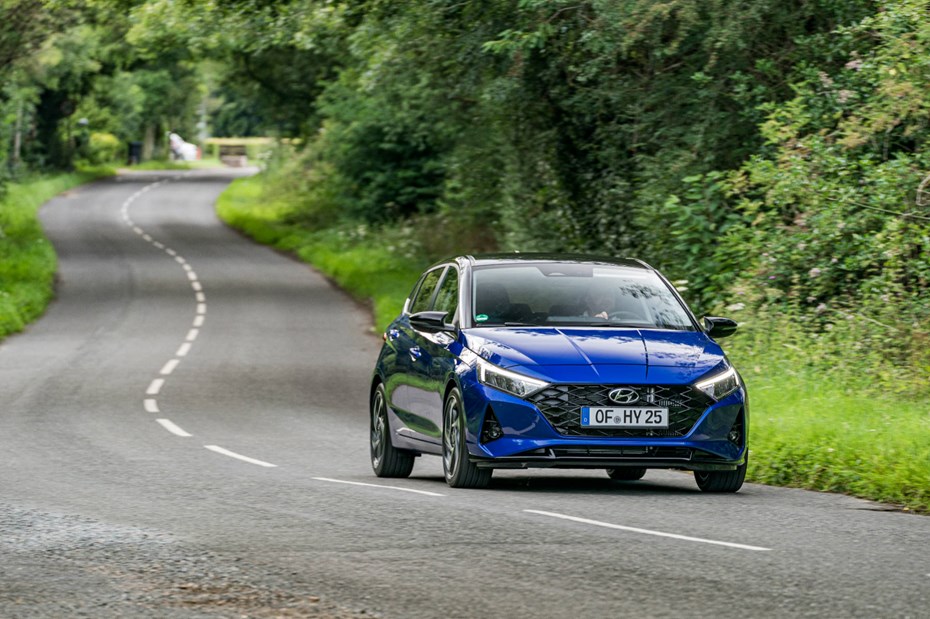The third-generation Hyundai i20 has been revealed, and we’ve driven a pre-production model.
Boasting cutting-edge tech and a dramatic new look, it should be available to order by September/October time. Prices are yet to be confirmed, but expect them to start from £16,000.
Hyundai is hoping to tempt supermini buyers out of Ford Fiestas and Vauxhall Corsas and into this new i20 by offering mild-hybrid engines, huge amounts of technology, and advanced safety systems usually reserved for much larger and more expensive cars.
Mild hybrid engines
New for the i20 is a 1.0-litre mild-hybrid petrol engine. This simpler type of hybrid recovers energy when braking and re-uses it under acceleration to take the strain away from the engine, meaning lower emissions and better fuel economy.
There’s also a more powerful version of this 1.0-litre engine, making 120hp instead of 100hp. However, Hyundai is currently unsure which versions will be coming to the UK.
Cheaper models will make do with an 82hp 1.2-litre petrol, which is making a living in other Hyundai models at the moment.
Tip top tech
Top line of the tip top tech is that Hyundai is aiming for the i20 to be the most comprehensively connected supermini – as well as the safest.
First thing you’ll notice inside are the twin 10.25-inch screens. One sits behind the steering wheel and controls the digital dials, while the other is the touchscreen infotainment system.
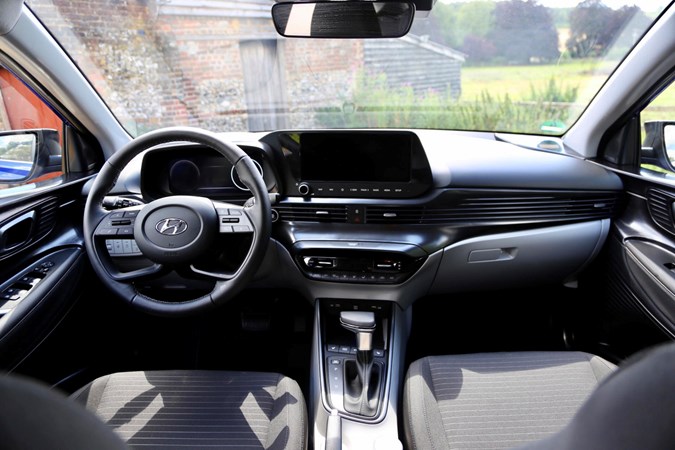
The prototype we drove was just that – a prototype, so it’d be unfair to fully-evaluate these systems. What we can say is that the tech we tested, like the sat-nav and reversing camera, were seamlessly integrated.
It’s too early to talk spec levels, but higher-end models will feature wireless Apple CarPlay and Android Auto, wireless charging, rear USB ports, ambient LED lighting and a Bose sound system.
Safety systems are hugely important to Hyundai. After all, it’s trying to tempt small families into these i20s, so autonomous emergency braking will be offered, alongside blind spot monitoring systems with software that can detect pedestrians and cyclists.
And while the integrated tech is savvy, there are still physical controls for the heating and ventilation systems.
New design
This third-generation i20 is supposed to showcase the future look of Hyundai’s cars. Looks good doesn’t it? It’s certainly different from the anonymous current model.
The new body is angular and sharp as well as being lower, wider, and longer than the current i20.
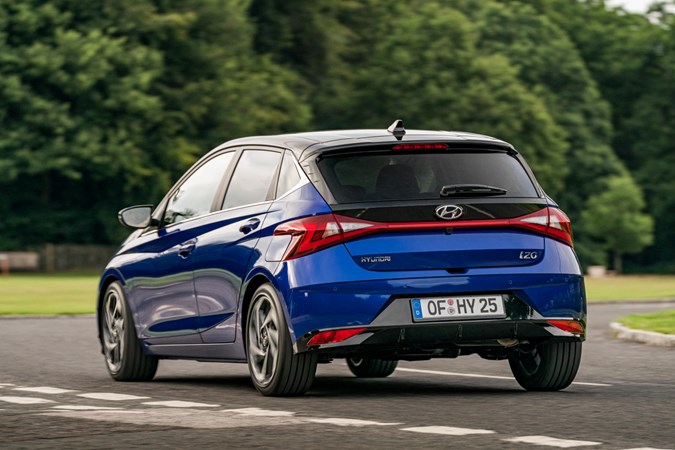
Our test model is two-tone. The thinking behind it is that the different colour up top tricks your mind into thinking the car is even lower than it actually is. Clever. Works well. Looks good.
The car in the pictures here is broadly what the sportier N-Line spec cars will be like when they arrive in the UK, so don’t expect base models to look this good.
Even more space
The growth in size means this new car is more spacious than before, too. To be precise; 30mm wider, 5mm longer, and 24mm lower.
Essentially there’s more space throughout because the wheelbase is now 10mm longer, meaning front and rear passengers have plenty of legroom.
The boot has grown, too, at 351 litres, which is up from the previous model’s 326 litres. And for a little perspective, the Fiesta’s boot can only muster 292 litres.
What’s it like to drive?
It’s hard to tell exactly what it’s like to drive because of how unfinished the car we drove was. However…
The model we drove was a 1.0-litre petrol mild-hybrid – with 100hp. It felt quick enough for most situations, and despite the car missing around 40kg of sound insulation, it didn’t sound too rough or loud. Smooth, too.
There are three drive modes with this engine – eco, comfort, and sport.
Eco’s opimised for feul economy, comfort is for everyday driving, while sport generally makes the throttle more responsive so more power comes with less application.
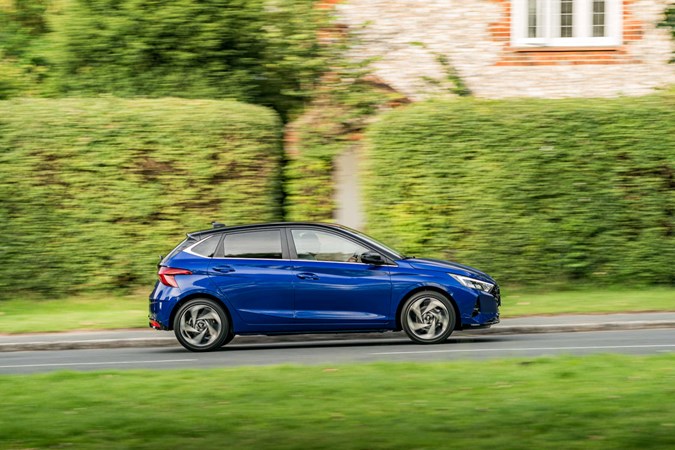
The regenerative braking in eco mode is super strong, especially considering it’s only a mild-hybrid. This means the car essentially slows itself down when you lift off the throttle.
Hyundai is unsure about whether this will stay for production models. But if it does, we can imagine it’ll have to have a profound effect on the economy to be worth the hassle.
We tested the seven-speed automatic gearbox, but it’ll also be available as a six-speed manual.
The automatic gearbox is a traditional lever-driven ‘box, with a manual mode. Push it to the left, and you can move the lever up and down to control which gear you’re in. No paddles to control the gearchanges on our test car, but UK spec cars may get them in the future.
It’s hard to gauge what the ride and handling is truly like because suspension rebound rates weren’t calibrated in the car we drove. But it all felt good. The steering especially gives you positive feedback, giving you the ability to confidently position the car..
Should I buy a Hyundai i20?
It’s far too early to really give a comprehensive answer. The prototype we drove was perhaps only 20% finished.
But the i20 is certainly appealing in a crowded marketplace. It makes the Ford Fiesta and Volkswagen Polo look staid. UK prices and trim levels are yet to be confirmed. But it looks like it will be more expensive than both these rivals.
However it also looks like the i20 will offer more tech. Add those radical new looks, safety systems, and frugal mild-hybrid engines, and it looks like the i20 will be able to be a worthy competitor to the Fiesta and Polo, as well as the Vauxhall Corsa.
Further reading
>> How good is the outgoing model? Read our Hyundai i20 review
>> The best small cars 2020
>> Zero deposit, 0% APR deals
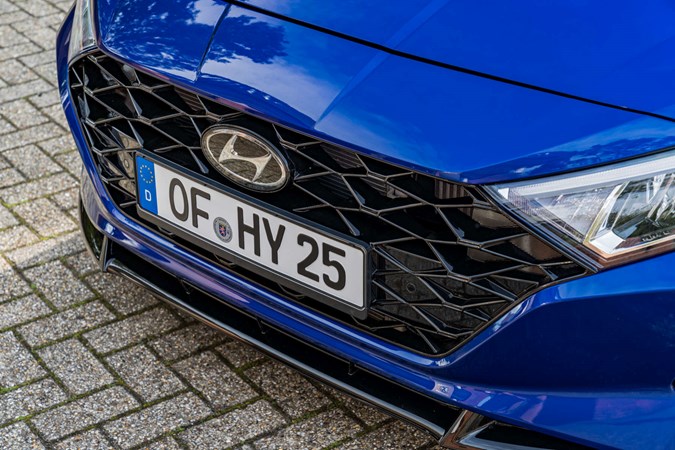
Just so you know, we may receive a commission or other compensation from the links on this website - read why you should trust us.


